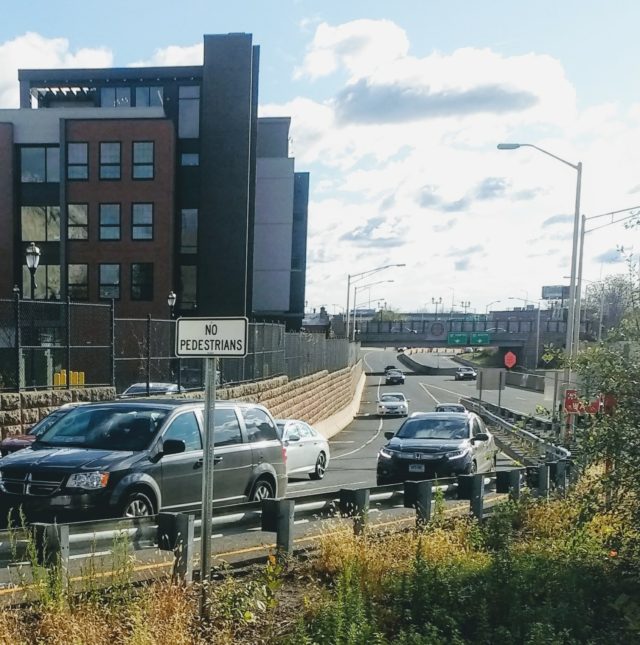
Gov. Lamont presented last week what he is calling “a realistic, fiscally responsible plan to transform Connecticut’s transportation system.”
Spoiler Alert: none of those statements about the plan are accurate.
If this car-centric plan had been pitched fifty years ago, it would’ve been cute, at best. Now, it is out-of-touch with what we need in the future, what we need now, and what we have needed for the last few decades.
Windshield Bias
Lamont’s CT2030 transportation plan is what one assembles when he exclusively, or nearly exclusively, uses the automobile, and when nobody advising him relies on public transportation.
How do we know? Math.
Lamont is willing to spend $21 billion on Connecticut’s roads and bridges; of that, only $52 million — spread out over 10 years — is designated for sidewalk projects throughout the entire state. Of that chunk of money, only .25% is devoted to sidewalk projects. Over ten years. Across the entire state. Go ahead and read that number again. The decimal point, I assure you, is in the correct place.
Near CCSU, where it would be a no-brainer to develop safer, more walkable streets and boost transit-oriented development around the CTfastrak stations, Lamont plans to sink $75 million into highway ramp projects. This flies in the face of what we know about younger generations moving away from car ownership. Who are we building for?
In New Haven, the governor is prepared to spend $55 million, essentially to subsidize poor choices in vehicles and people’s inability to operate them responsibly. His plan states: “Parents driving SUVs and minivans should not have to worry that the very design of an exit ramp or a highway is what could lead to a car crash.”
Although it is true that design contributes to crashes, Lamont is moving in the exact wrong direction by looking to widen and straighten roadways; this tells people to drive faster and with less caution. This backwards logic is repeated throughout the plan.
Meanwhile, parents trying to find a crosswalk so they do not have to worry about their family being struck by a carelessly operated vehicle, those folks are nowhere in this equation — not in any way that matters.
If only the safety of those outside of these oversized vehicles were given half as much thought as those inside of them!
There were exactly two projects, outside of the “Community Connectivity Program” that so much as mentioned pedestrians. The Rt. 15/ Rt. 7 one in Norwalk claims that: “The upgrades to this system of roads and highways will lead to better access for pedestrians on local roads, bicyclists, and users of mass transit.” How? Unclear.
Manchester, it seems, will see actual improvements: “two modern roundabouts improving/normalizing traffic operations while also addressing concerns with vehicular, pedestrian, and bicyclist safety along Route 83, Oakland Street, and various intersecting local roadways within the project limits.” Of course, this assumes that the “modern roundabouts” are what they proclaim to be, and not disasters like Pulaski Circle, which is a failure of a rotary.
Much of that $21 billion can be put to better use, such as funding barrier-protected bicycle lanes in our urban areas, adding bus routes and stops in the suburbs and exurbs, and installing other types of traffic calming infrastructure that would help keep people alive and safe. We could use updates to traffic signals for pedestrians, so that we are not wasting time standing through full light cycles because of broken beg buttons. We could see significant traffic calming on state roads, to keep motorists, pedestrians, and cyclists alive. Those of us who walk or ride bicycles to work and school — and who are in many cases, parents — are deprived of infrastructure necessary to improve our safety, while most of these road projects are merely temporary improvements to level of service. Is our governor really prioritizing speed over human life?
Ignorance of Induced Demand
Our entire highway system in Connecticut has been predicated on the myth of congestion relief. The Connecticut Turnpike — a collection of highways running from the New York to Rhode Island border — was intended to reduce traffic jams on the Boston Post Road (Route 1). There was initial relief when it opened in 1958, but by 1970 Old Lyme residents were protesting against the expansion of the highway. Even then, people understood that they were being sold a load of bullshit:
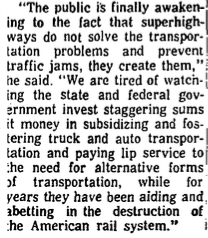
Induced demand. We have known about it for as long as we have known about climate change, yet few seem to accept it as reality.
Induced demand means that after the supply increases, more of that good is consumed. In this case, when another lane is added to the highway, there is temporary relief, and then it clogs right back up. Doubting this? Go spend an afternoon digging through newspaper archives from the last hundred years and look at the patterns.
At the same time, we know how to reduce traffic on any given road. Back in 1985, toll booths were removed from the Connecticut Turnpike. Within two months, traffic increased by thirty percent on that highway. Rather than reinstate tolls, there was a push to add lanes to I-95 and/or the Merritt Parkway.
What Lamont needs to be doing is discouraging single-occupancy car use (driver only) by adding an appropriate number of toll gantries, eliminating excess lanes and reducing road widths, and removing redundant ramps. Do we need all the Whitehead Highway exits, or just the one? Do we need an I-84 East entrance on Broad Street and then again on Sigourney Street, just half a mile apart? Make driving irritating enough so that those who have alternatives readily available, like carpooling or taking the bus, will be motivated to do so.
Then, Lamont needs to entice people out of their cars by supporting smarter land use, improving transit, and making it safer for cyclists and pedestrians.
Acknowledging Transit Is Not the Same As Improving It
The $8 million for planned for CTtransit is peanuts, but also is not necessarily going in the direction it should be. Getting more people to ride means adding routes and stops. I would expect there to be investments in buses and drivers. Instead, what we get are bells and whistles. Why do we need to spend money on a mobile app when we already have a free Transit app or Google to use? The digital signs that announce when the next buses are to arrive are nice, as are the shelter upgrades…yet there is only so much one can do with paltry leftovers, which is all that’s left after the bloated spending on highways and airports.
Sure, another line item is designated for new buses and maintenance, but this does not indicate an increase in overall number of buses, just the electric buses will be added.
Lamont gave more consideration to rail than bus transit, and I would argue that most of the rail improvements are things that should have happened already, such as all stations having digital displays so those with no sense of direction can easily figure out if the train arriving is headed to New Haven or Springfield. It is also about time that Enfield got a station. Want to clear up congestion on I-91? Get people on the train and out of their damn cars!
CT2030, in sum, needs to be rewritten. I would say “revised,” but that would imply it had any vision. Start by consulting multimodal commuters and plan for our modern world, which requires nothing short of a dramatic shift away from single-occupancy vehicle usage.
Want to share your feedback on this “plan” with Gov. Lamont? There’s a form for that.
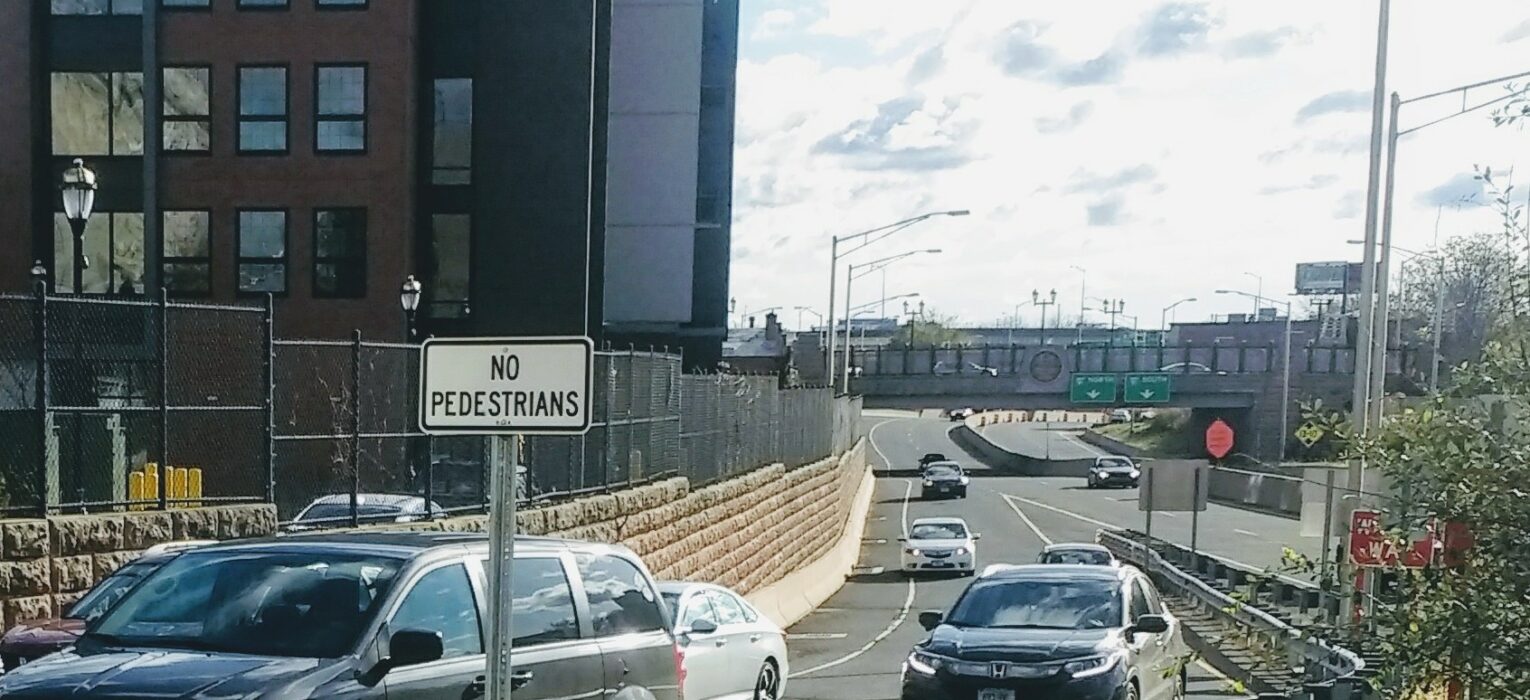
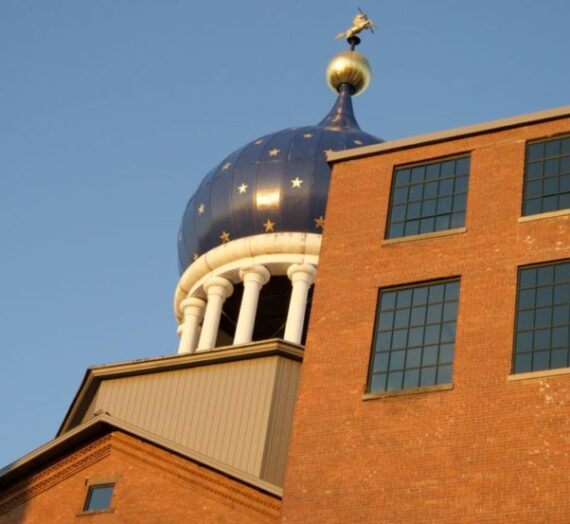
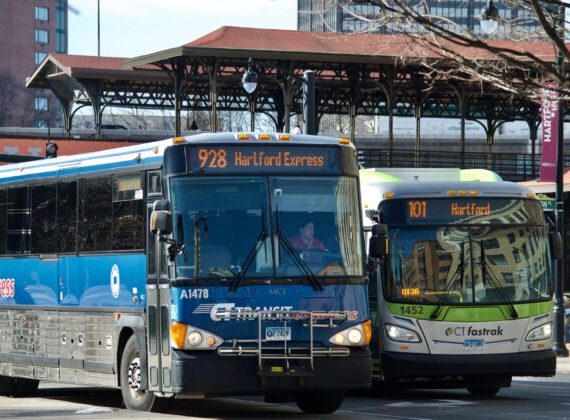
Peter Brunelli
That money could rebuild Metro North, extend/rebuild Shoreline East, build out the New Haven/Springfield rail, and rebuild the Thames, Naugatuck, and Housatonic lines. The result would be a real economic engine tying southern New England to NYC. Instead it is more blacktop, more one lane exits connecting interstate highways, and no solutions to the many traffic chokepoints throttling our economy.
Casey Hardin
This is a really well-written, fair critique. I hope they listen.
Chris
Great write-up and I’m glad to see the alternative transportation devil’s advocate view. I got a sneak preview of the plan the morning before it was officially announced and I’m sad to admit I accepted the plan pragmatically – I saw a lot of compromise (read: politics – bleh) and I saw a lot of safe bets. And despite what you said – “Acknowledging Transit Is Not the Same As Improving It” – I got transfixed that he even _acknowledged_ public transit, let alone proposed several ways to improve it. I would love to see more (high-speed) rail development in this country and think it’s key to decreasing environmental impacts of domestic travel, but I had zero hope in CT trying to develop new rail lines and ultimately accepted anything, as long as it was something. I am disappointed with the decrease in tolls because I think that was something that could have really forced people to rethink their solo commutes, but, who knows, maybe these 14 tolls can still have a positive impact. As much as I don’t like the driver-centric proposal, I understand it from a sensitive – daresay (bi)partisan – point of view that’s trying to solve all of CT’s woes in 10 years. I want more radical change – expansive local walking and biking routes all the way to national high-speed rail – but it just sucks that people are blind to anything but their way of life and the culture defined by our ancestors some 50+ years ago 🙁
Kerri Provost
I don’t understand what is pragmatic about accepting a shit deal that ignores the right to life for those who walk and bike to work. I’m also at a loss for how this is a “devil’s advocate” viewpoint. You might want to check your word choice.
Chris
Sure, devil’s advocate wasn’t a great choice of words… I just picked a common phrase to try to describe the opposition view – one that in particular advocates for alternative transportation, which is a notably unpopular perspective in the US. If you thought I meant you were simply arguing your case for the sake of arguing, I apologize because that’s not what I was going for. Personally, I respect the devil’s advocate role because it’s vital to understanding other viewpoints as well as the bigger picture of situation. “Devil’s advocate” is not at all a slight – it was just a self-aware recognition that talking about transportation without the utmost reverence to private cars is not only unpopular, but also contrary to the auto-centric culture developed in modern society.
As far as the piece about pragmatism, I stand by the personal accuracy my statement, though I’m not proud to. I have little faith in our government, national down to local, to do the right thing for society, for the world, for the environment. I recognize that our most powerful governments (national and state) are run by children who’d rather toe party lines and shut down rather than work together. They cater to the most primal, indivualistic nature of humanity and, on the subject of transportation, have done very little to advance anything that isn’t car-centric (or even worse, air-centric). I want to have hope – I vote, I spread knowledge and perspective, I reach out to politicians – but that doesn’t mean I have a high bar set for public policy. As I mentioned, I was relieved to hear any inclusion of mass transit in the 10-year plan and admittedly it’s a dangerous view, almost Stockholm Syndrome-esque, but it’s unfortunately the reality of the situation from my eyes. You keep fighting and I’ll keep fighting nonetheless – change can only come with a recognition that change is needed in the first place. Just because it’s disappointing world to live in sometimes doesn’t mean we can’t strive for better.
Anthony Cherolis
If anyone wants to see what ~900 residents thought about what CT should be doing about our transportation future, they can check out these survey results from October 2019. Really interesting stuff. The resident responses differ widely from the CT2030 plan budget priorities. http://www.tinyurl.com/19surveysummary
Catherine Johnson
I wish we had the transit CT had in 1930! You could take a train from Middletown to Hartford, Waterbury to Willimantic. You could take a streetcar anywhere. And everyone walked because Hartford was intact, it wasn’t ripped in two by an east/west river of steel. We had a common framework for how our streets should function and our priorities for capital spending.
A very well-written article. How does CT climb out of the Car Culture hole and into the modern world? Massachusetts is – can’t we? I applaud the Gov for proposing tolls. It’s $12 to travel 2 hrs thru NJ. The world travels thru NJ. They also do through CT. Let’s get that $12 and put it toward re-building our cities: connecting the train to places people congregate, connect people to schools and grocery stores by bike, and reducing the asphalt we have paved over our beautiful state.
MJ Agostini
We need to elect younger people to run our state. People who are progressive thinkers with a vision. Look at what Erin Stewart has done for New Britain.